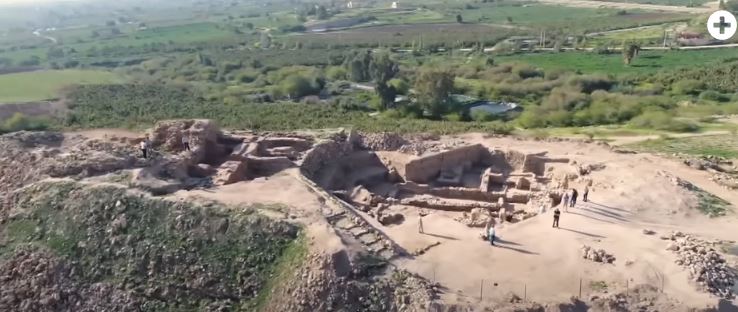
JORDAN (VINnews) — An archaeologist believes that he has discovered the ancient site where S’dom once stood. In a recent podcast interview, the expert described an abundance of evidence to support his belief.
Trinity Southwest University’s Dean of Archaeology Steven Collins told podcast host Joel Rosenberg that he and his team believe the Tell el-Hammam site in Jordan appears to have many of the markers of S’dom. Scattered Bronze-age remains appear to have been melted in a “flash heat” scenario, matching the Torah’s description of how S’dom burned to the ground with sulfur and fire.
Collins says the location matches the Torah’s description and that the on-site physical evidence – including “glazed” pottery – supports his case.
Collins referenced a 2022 paper in the journal Nature in which researchers reported evidence of a “highly unusual catastrophic event” – possibly resembling a meteor – that left a “charcoal-rich destruction layer” and melted objects roughly 4,000 years ago in Tall el-Hammam.
The paper suggested that Tall el-Hammam was “wiped out in the blink of an eye,” Collins said.
These chilling details seem to be highly aligned with the Torah’s depiction of S’dom’s demise.
Digging in the soil, Collins said, “as soon as we get a few centimeters into that [Bronze Age] matrix, this piece of pottery, the shoulder of a storage jar, is facing up at us. And it looks like it’s glazed.”
A member of his team who worked on the Manhattan Project which developed the atomic bomb looked at the melted shard and remarked, “Wow, that looks like Trinity,” Collins said. “Trinity” was the code name for the first nuclear test site in New Mexico.
The geographical evidence supports the theory as well. Collins said that “there are at least 25 known pieces of geography [in the Torah] that you can triangulate between to take you to the city of Sodom.” For example, Bereishis 13:10 states that when Lot was at Beis -El and Ai, he traveled eastwards. Tall el-Hammam is east of Beis-El and Ai.
Other locations in the region that have been hypothesized as sites for S’dom don’t fit the Torah, he added.
“It was actually the Biblical text that put us at this site,” he said. “We just simply navigated around the geography.”
Source: VosIzNeias